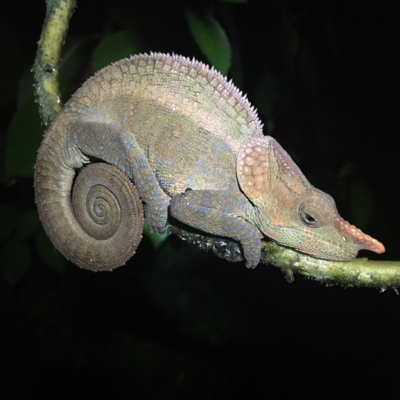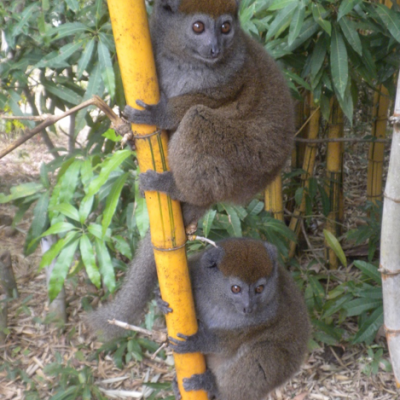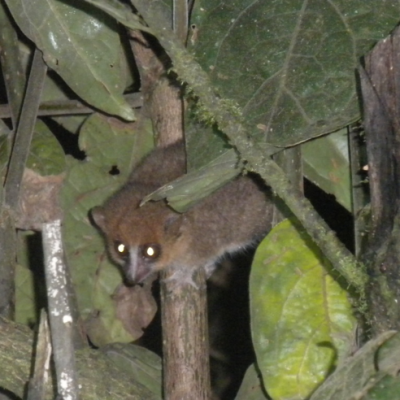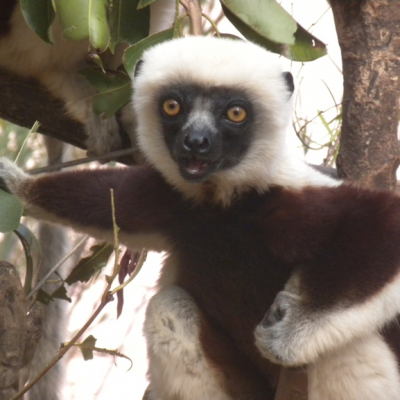
The following post was contributed by Alumni Memorial Scholars senior Kyle Rhodehouse, who recently completed an independent research project, using his AMS grant funds, studying wildlife conservation efforts in Madagascar.
 I spent 25 days traveling around Madagascar to study wildlife conservation efforts in the island’s unique habitats. More than 90% of species in Madagascar are endemic, meaning they are found nowhere else in the world, and many of these species are in serious danger of extinction. I wanted to see firsthand how the Malagasy, the native people of Madagascar, interact with the unique biology of their homeland.
I spent 25 days traveling around Madagascar to study wildlife conservation efforts in the island’s unique habitats. More than 90% of species in Madagascar are endemic, meaning they are found nowhere else in the world, and many of these species are in serious danger of extinction. I wanted to see firsthand how the Malagasy, the native people of Madagascar, interact with the unique biology of their homeland.
Madagascar is a biodiversity hotspot, home to countless species of endemic birds, insects, arachnids, reptiles, mammals, and plants. But the island is most famous for its lemurs, a group of animals unique among their fellow primates. Lemurs evolved in isolation on Madagascar, reaching the island from mainland Africa by rafts of vegetation swept away by storms some 40 million years ago. Lemurs might resemble monkeys to the untrained eye, but they are very different creatures.
Lemurs belong to the group of mammals with wet noses (like pet dogs and cats), and have long snouts, while monkeys and apes have dry noses and flatter faces. They have a specialized set of four incisors called a toothcomb, used for grooming. Their eyes are larger and more forward facing than monkeys and apes, but they are largely colorblind. Lemurs can be diurnal or nocturnal. Diurnal lemurs live in female-led family groups, while nocturnal lemurs are loners. Some are vegetarians, eating fruit, leaves, or bamboo, while others are omnivores and add insects to their diet.Perhaps most importantly, their brain-body size ratio is larger than those of monkeys and apes—they aren’t as intelligent as their cousins in mainland Africa. The lemurs that didn’t make it to Madagascar were outcompeted by the smarter species of monkeys and went extinct. In Madagascar, they continued to thrive and radiate into more than 100 species, adapting to the variety of environments present on the island.

The south of Madagascar is usually very dry, but some beautiful pockets of water remain
My 25-day journey around the country allowed me to observe a total of 13 species of lemurs (yay Colgate!). This included 11 diurnal species and 2 nocturnal species. My life-list included the indri, the world’s largest living lemur, which makes a haunting call through the forest that carries for miles. The local Malagasy people revere these lemurs because legend says that they are our brothers and come to the aid of travelers lost in the forest. I also saw the mouse lemur, a nocturnal lemur that, at only 45 grams, is the smallest primate in the world. These two species live in the rainforest of the central highlands, where they share the forest with the diademed sifaka and the red-fronted brown lemur. In the dry forests of the South, I saw the Coquerel’s sifaka, a species made famous by the children’s show Zoboomafoo. In the spiny forest of the southwest coast, I observed ring-tailed lemurs, the most recognizable species, due to their long, bushy black-and-white tail, which they use to communicate with one another.

This baobob tree is 43 feet around and 1200 years old!
As I made my way south, the climate changed from temperate and warm to hot and hotter. My journey ended in the lively beach village of Mangily, which sits on the Mozambique Channel just north of the Tropic of Capricorn. Daytime temperatures could flare up to 110 degrees Fahrenheit, despite it being the Malagasy winter. Here, I spent 8 days volunteering for the Lemur Rescue Center, a program run by the French ONG Reniala. At Lemur Rescue Center, lemurs are rehabilitated after being recovered from the pet trade or bushmeat trade.
My experiences led me to conclude that lemur conservation continues to face an uphill battle. Madagascar is one of the poorest countries in the world, and rampant corruption in the national government and in local police forces hampers the creation of national policy to improve peoples’ lives or protect the environment. The average Malagasy person lives on less than $2 a day, and their economy is plagued by hyperinflation. In rural villages, most people are subsistence farmers. In the deserts of the South, we came upon villages that struggled to find and store fresh water.

This radiated tortoise is about 110 years old. The species is in danger of being hunted by hungry Malagasy.
Additionally, as food becomes more and more scarce, people will do whatever they have to do to survive and feed their families—this includes hunting and eating lemurs and rare tortoises. There are lucrative black markets for pet lemurs and precious rosewood from the rainforest. Slash-and-burn agriculture is practiced all over the island, and only 2% of the original forest remains, the rest having been burned for human use. Madagascar eats more rice per capita than any other nation in the world. Rice is a land and water intensive crop, requiring large amounts of land to be cleared every year.
The people have no choice but to burn the land to feed themselves—the fires continue, albeit illegally, inside national park boundaries, or encroach on protected land when spreading uncontrollably. Additionally, families in rural areas will typically use any surplus money they have to buy zebu cattle, which exacerbates the need for more land. A lack of family planning options has led to a booming population increase, which further strains the already scarce supply of resources. For these reasons, habitat destruction is the number one threat to lemur conservation.

These friendly people traded hats with me and shared their sugarcane rum, in a celebration of a recently deceased family member’s life. The cloth on my shoulder is called a “lamba,” and is used for fashion, decoration of homes, and carrying things. Women wear them as skirts and carry babies with them. The staff’s length is a sign of power—village elders have longer staffs.
Consistently, I found that protecting the lemurs is understandably not a priority for much of the population, who are concerned with their own survival much more than that of any animal. Some believe that conserving lemurs will bring in droves of ecotourists (like myself) who will spend money, create jobs in the tourist industry, and revitalize the economy. I find this claim intensely dubious—tourism alone cannot generate the revenue needed to improve the quality of life for most Malagasy. And, as others have observed, the notion that Malagasy people would love to be employed serving tourists’ beck and call is akin to a second colonialism (Madagascar was a French colony from 1896-1960).
As I see it now, there is no one right answer for how best to protect and conserve the critically endangered lemurs of Madagascar. As habitat destruction and global climate change continue to threaten these species, the future of lemurs looks bleak. My experiences in Madagascar made it clear that the problems facing conservation are intrinsically linked to the problems faced by the Malagasy people. In order to effectively help the animals of this unique place, we must also be prepared to help its people.











